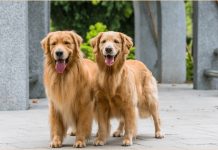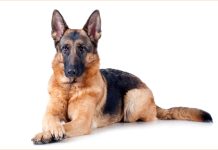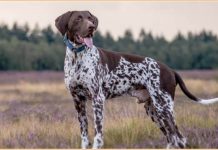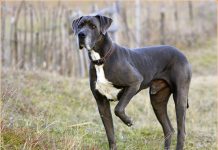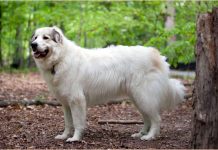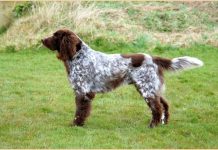Dutch Shepherd dogs were formerly used by shepherds inside the Netherlands for the comprehensive farm work. Basically, a dog of this breed is clever, highly trainable and of friendly nature. Presently, these dogs are used as service animals, police dogs, and family-friendly companions.
Dutch Shepherd Facts and Information
- The Dutch Shepherd dog is a lively, alert, athletic, and clever breed
- Their nature is independent and they can be somewhat stubborn and may have a mind of its own
- They keep flocks of sheep in a specific location and these dogs are capable to run the whole day
- They own the second greatest powerful bite of all the dog breeds. (Rottweiler’s hold the first position)
- They are used often as police breed
- Their jaws can be regarded as weapons.
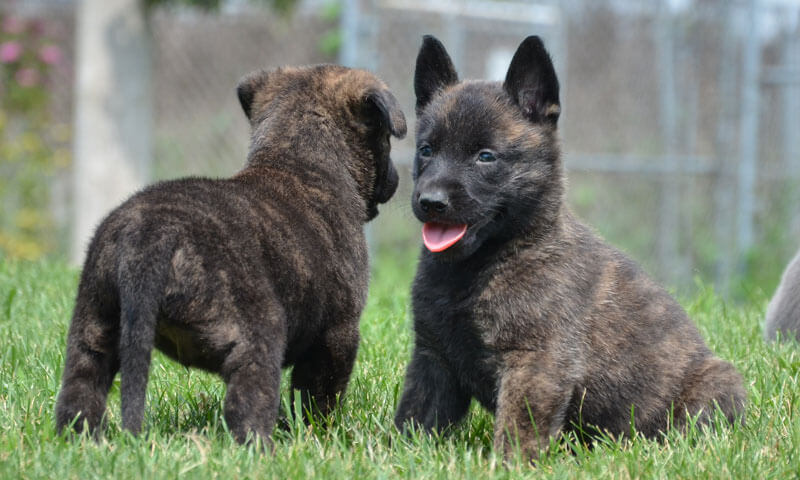
Diet
A Dutch Shepherd dog usually needs two to three cups of high-quality, balanced, and finest dry dog food on regular basis, for at least two meals. You can include a salmon oil or flaxseed oil supplement to its diet in order to keep its skin healthy. It is recommended to avoid allergen-causing ingredients, including corn, wheat, or soy.
Also read:
Habitat
They are okay with apartments if their exercise needs are met. Dutch Shepherd dog breed is originally Netherlands, so all weather coat of this breed allows them to live in colder climate.
Behaviour
The behaviour of Dutch Shepherd dog is basically friendly type. They are affectionate, faithful, and active by nature. The behavioural qualities make them a wonderful companion for its owner and family. While herding flocks of sheep, the dog can easily get along well with similar other dogs and can work together.
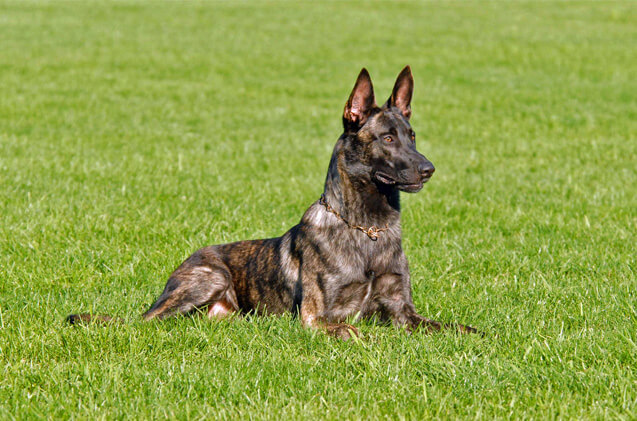
Temperament and Personality
Possessing real shepherding temperament, the dog breed can apparently work eagerly together along with their owners. Moreover, they can deal separately with any activities they are allotted. The dog possesses bold personality and they are not aggressive or shy.
Lifestyle
Basically, these dogs have active lifestyle, and possess working nature in the field. You may be doing harm to this dog if you simply leave them within the backyard or home. The dog prefers to go on a long walk every day.
Lifecycle
The lifecycle of the Dutch Shepherd dog is 14 years with comparatively few genetic health problems.
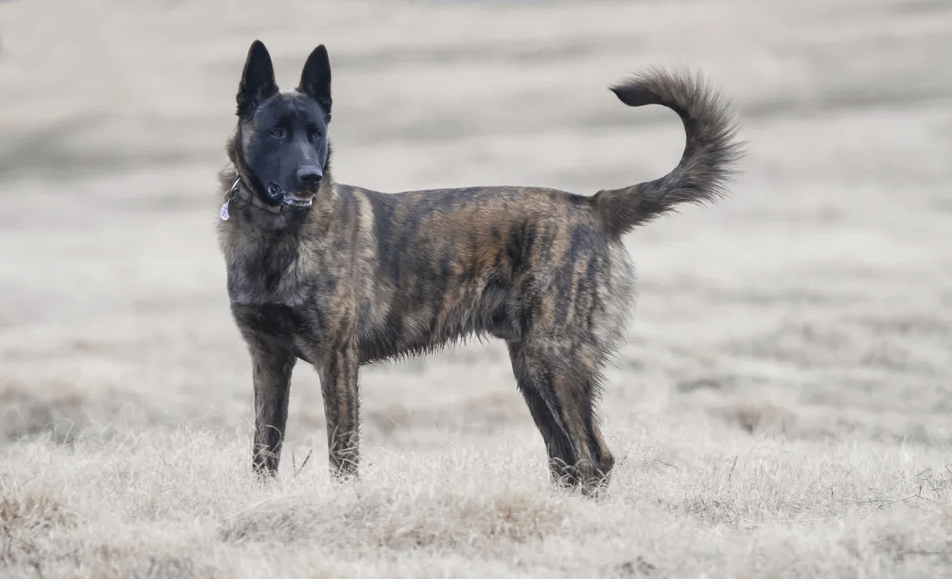
Predators
They are capable to guard livestock against predators because they own sufficient courage to fight against them. The predators include coyotes, lions, and bears.
Breeding
The dogs are recognized as the second most famous breed in the United States. Originally, the breeding began before more than 100 years from Netherlands. Presently, they have their own breeding standards.
Also read:
Appearance
The appearance of Dutch Shepherd dog can be characterized based on their hair and coat, which comes of a silver brindle or gold brindle. The Dutch Shepherd possesses an average weigh of around 50–70 pounds (i.e., 23–32 kg) and their height usually varies from 55 to 63 cm. They are extensively categorized based on the length of their hair. Based on the coat, the dog breed can be primarily classified as short-hair, long-hair, and rough-hair.
- The short-hair type of Dutch Shepherd dog breed has hair all over their body, styled in close-fitting, with vague undercoat. Their tail curls are clearly visible.
- The long-hair type of Dutch Shepherd dog breed has straight, long, and harsh to the touch kind of hair. Their hair is without curls or waves and basically they have woolly undercoat.
- The rough-hair type of Dutch Shepherd dog breed has thick and harsh tousled coat. Moreover, they have woolly and thick undercoat encompassed all over their body excluding their head.
Discussing their appearance based on colours, their fundamental colour is silver or golden, and it can vary from a slight white light sand-coloured shade to chestnut red as well. It is found that a “true silver brindle” is rare, as excess white colour is considered as a fault. Besides, the brindle is evidently present all over their body, within the breeches, ruff, and tail.

Life Span
The life span of Dutch Shepherd dog breed is 15 years.
Health Issues & History
The Dutch Shepherd dog breed possesses no severe mental or physical hereditary based health issues. Some reports stated that they face health issue of hip dysplasia; however, such instances are very low.
Originally, the Dutch Shepherd dog breed started out in form of a shepherd’s working dog. They were used for all types of activities on farms in the Dutch countryside initially. They were skilled of herding sheep and many livestock, and in addition to that, they too kept chickens out of the gardens, dragged carts, and worked as watchdogs as well. Before many years, there was little difference between Dutch Shepherds, German Shepherds and Belgian Shepherds dog breed.
This is because they only differ in terms of coat colour. However, the dog breed has diverged considerably in last 100 years and presently they possess their own breed standards. It came to know that the advancement of contemporary farming techniques let these dogs needless for herding as well as other farm activities. It was during the era of World War II that their breeding in the Netherlands put on halt. After the completion of war, it came to know that breeders sustain the attempt of breeding Dutch Shepherds and combined in dogs of anonymous origin.
Grooming
The grooming practice of short-haired, long-haired and rough-haired Dutch Shepherds dog is different. The short-haired breed requires random combing, through the exception throughout the shedding period during the spring and fall while a daily careful brushing is mandatory. On the other hand, the long-haired breed requires to be groomed once every week, or more often based on their activities and environment.
The rough-hair breed requires to be carefully brushed once every week, and twice every year. Their bathing can be done as required and their nails can be carefully trimmed, if required, by the help of a grinder or nail clipper. Their teeth should be brushed regularly.
Shedding
The dog shed their hair during the spring and its fall. If they are taken care properly, their shedding can be reduced.
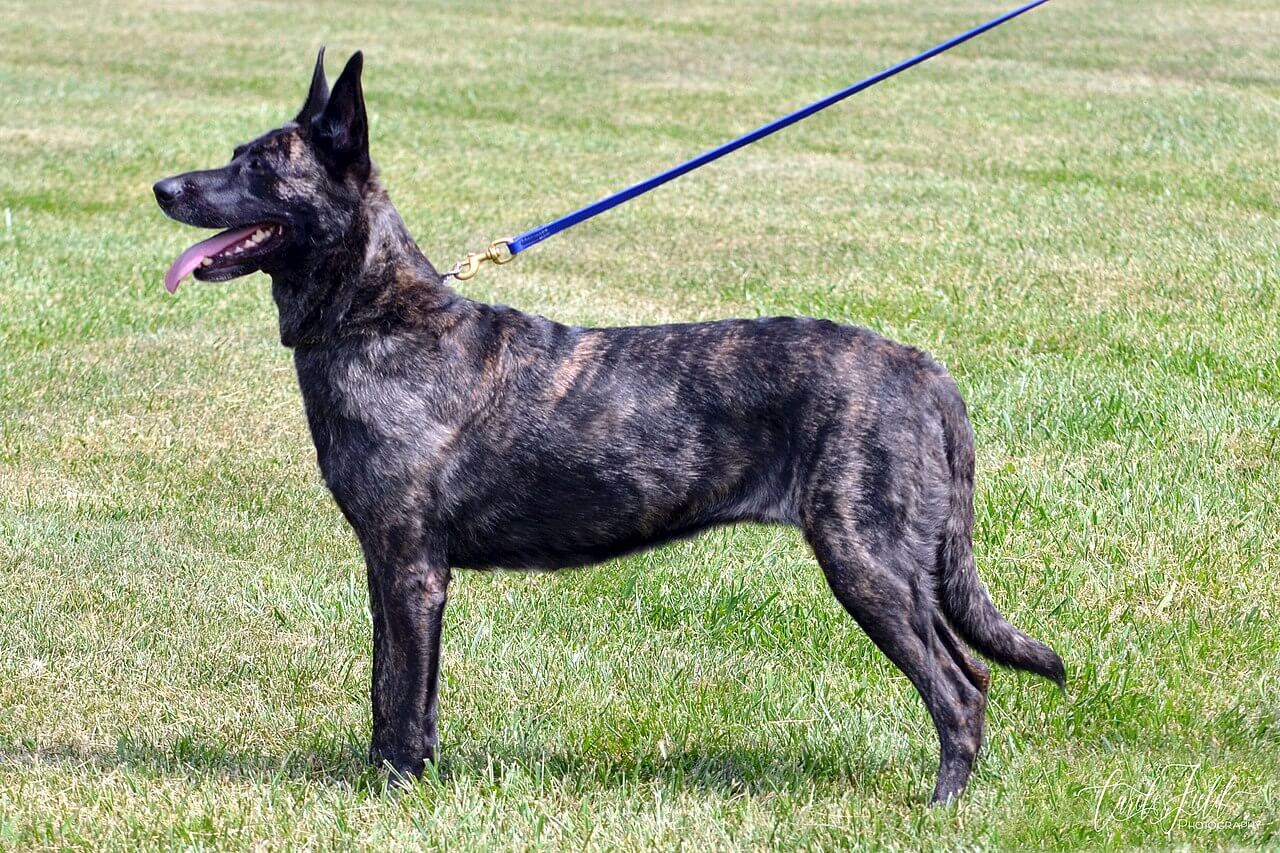
Dutch Shepherd Characteristics
- Dutch shepherds dogs are characterized as medium-sized and muscular herding dogs hailing from the Netherlands.
- The dog own wedge-shaped heads as well as almond-shaped eyes.
- They have upright ears and their tail hangs down with a minor curve seen at the end while they rest.
- Their feet have arched toes.
- They come in attractive gold and silver brindle coats.
Popular names for a Dutch Shepherd dog
There are many popular names available out there. Few of them are Atlas, Axel, Apollo, Ace, Polo, Pepper, Indigo, Jack, Duke, Epic, Mister, Elsa, Belle, Kip, Cassie, Finger, Venus, Tamra, Sabrina, Hercules, Harley, Hammer, Thor, Gusto, Fido, Sunny, Nova, Val, Viper etc.
Look At Pros and Cons Before Buying Dutch Shepherd
Pros
- Dutch shepherds dogs are intelligent, affectionate, loyal and easy to train
- They require fairly low-maintenance
- They know how to quickly socialize with kids and other animals
- They are extremely intuitive as well as goal-oriented
- Dutch shepherds dogs excels in obedience and agility trials
- They are intelligent and incredibly athletic
- They are comfortable in any weather
Cons
- Being an active breed of dog, Dutch shepherds dogs need lot of outdoor activities
- A Dutch shepherds dog can be rude if not trained properly
- Being from family of herding dogs, sometimes, a Dutch shepherds dog may annoy kids, bicyclists or joggers
- They are heavy shedders
- Dutch shepherds dogs are prone to minor hip or elbow dysplasia

